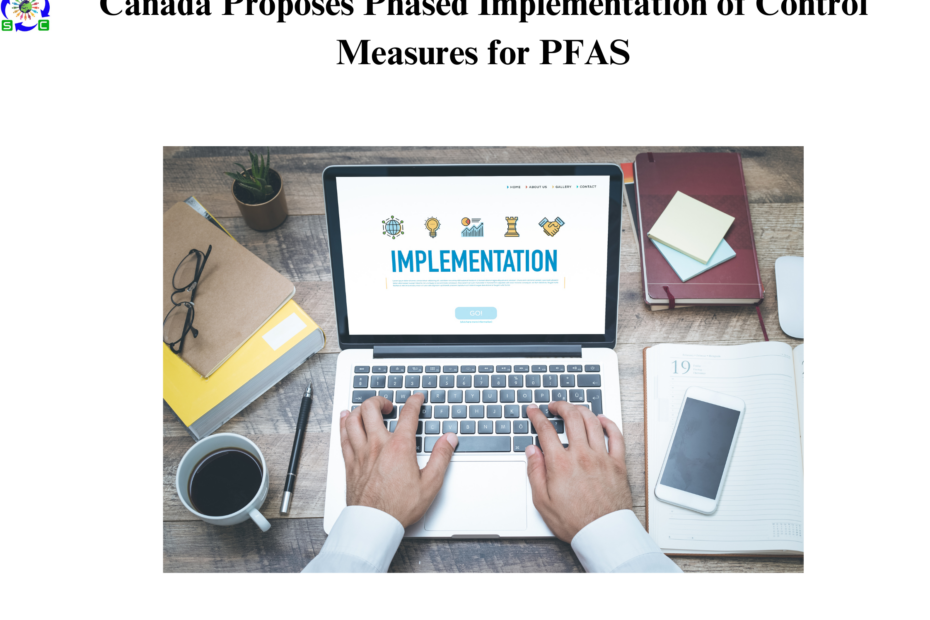 Backgrounder
Backgrounder
Per- and polyfluoroalkyl substances (PFAS) are a large class of over 15,000 human-made chemicals sharing common chemical features. Known as “forever chemicals” due to their extreme persistence, PFAS do not break down easily and remain in the environment for extended periods. Because of their oil- and water-repellent properties, PFAS are widely used in numerous products and industrial applications.
PFAS are found throughout the environment due to their widespread use and ability to travel long distances, resulting in ongoing environmental and human exposure. In humans, PFAS exposure has been linked to impacts on various organs and systems, including the liver, kidneys, thyroid, immune and nervous systems, metabolism, reproduction, and development. In wildlife, PFAS can harm the immune and nervous systems, as well as impair growth and reproduction. Some PFAS also bioaccumulate in living organisms and magnify up the food chain.
Given their persistence and widespread use, environmental levels of PFAS are expected to continue rising. Increasing scientific evidence shows that concerns about well-studied PFAS may apply to other PFAS as well, necessitating proactive risk management while balancing economic considerations.
State of Per- and Polyfluoroalkyl Substances (PFAS) Report
The Government of Canada is releasing the State of PFAS Report, following public consultations on earlier drafts in 2023 and 2024, which received input from over 400 stakeholders.
Based on the latest scientific evidence, the government has assessed PFAS as a class, consistent with the OECD’s broad chemical definition. Research suggests that health and environmental risks identified for certain PFAS likely extend to other substances in the class. A class-based approach helps avoid replacing regulated PFAS with similarly hazardous unregulated ones.
The report concludes that PFAS (excluding fluoropolymers) are toxic under the Canadian Environmental Protection Act, 1999 (CEPA), meeting two key criteria under Section 64 of CEPA:
- They are entering or may enter the environment in ways that cause or may cause harm to the environment or biodiversity.
- They are entering or may enter the environment in ways that constitute or may constitute a danger to human health.
These findings provide a science-based foundation for future actions and consultations.
While fluoropolymers are included as a subgroup of PFAS, they are temporarily excluded from this report due to differing exposure and hazard profiles. The government will continue evaluating fluoropolymers to inform future decisions.
Based on the report’s conclusions, the Government of Canada proposes to add PFAS (excluding fluoropolymers) to Part 2 of Schedule 1 of CEPA, enabling targeted, phased risk management to protect public health and the environment.
Proposed Risk Management Approach
Recognizing the extensive use of PFAS across various sectors, and the importance of some uses for safety, health, and economic reasons, the government is seeking industry input to identify feasible alternatives.
The proposed Risk Management Approach sets out two key objectives:
- Reduce PFAS releases to the environment to prevent harmful effects, while balancing environmental protection and economic feasibility.
- Minimize human exposure, particularly for disproportionately affected populations.
To achieve these goals, the government proposes a phased approach:
- Phase 1: Address PFAS in firefighting foams (not yet regulated) due to high exposure potential.
- Phase 2: Target consumer products where alternatives exist, such as textiles, ski waxes, building materials, and food packaging.
- Phase 3: Examine other sectors through stakeholder engagement and further assessments.
The Risk Management Approach will be open for public consultation from March 8 to May 7, 2025.
Canada’s Ongoing Actions on PFAS
The Government of Canada has taken multiple actions to address PFAS:
- Regulatory measures:
- Since 2012, the Prohibition of Certain Toxic Substances Regulations have targeted three PFAS subgroups: PFOS, PFOA, and long-chain perfluorocarboxylic acids (LC-PFCAs), including their salts and precursors.
- An update to these regulations is expected in 2025.
- Monitoring and data collection:
- Starting in 2025, 163 PFAS will be added to the National Pollutant Release Inventory (NPRI), requiring disclosure for manufacturing, processing, or use above 1 kg annually.
- The government has also gathered data through 2024 information collection notices, covering 312 PFAS, to establish baseline data for future action.
- Drinking water standards:
- Health Canada finalized PFAS objectives for drinking water in August 2024.
- Great Lakes protection:
- Under the Great Lakes Water Quality Agreement, actions are underway to limit PFAS releases.
- Limits on biosolids:
- In June 2024, the Canadian Food Inspection Agency (CFIA) introduced an interim standard limiting PFOS in biosolids used as fertilizers to below 50 parts per billion (ppb).
- Contaminated sites management:
- The government continues addressing PFAS contamination at federal sites, including providing alternative drinking water and site clean-up efforts. Details are available in the Federal Contaminated Sites Inventory.
- Collaborations:
- Canada works with provinces and territories through the Canadian Council of Ministers of the Environment (CCME) and coordinates with neighboring jurisdictions when contamination crosses boundaries.
For PFAS concerns unrelated to federal activities, residents and municipalities are encouraged to contact their provincial or territorial environment and drinking water authorities.
Stay ahead in sustainability compliance with Global PCCS —where expert insights meet the latest regulations. Unlock a future where compliance fuels sustainability, helping your business thrive in a greener, well-regulated world. For more information, contact us at info@globalpccs.com








 Authorised IMDS & CDX Training & Consulting partner for
Authorised IMDS & CDX Training & Consulting partner for






